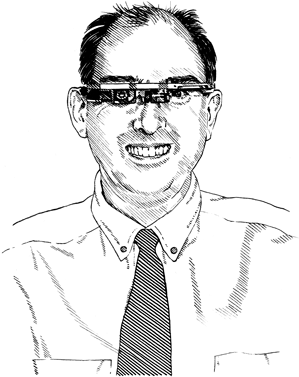Many of us who use a wearable computer to augment our vision have come to rely on it as our normal way of seeing, understanding, and making sense of the world. As we get older, whether we become reliant on the technology through loss of natural function or merely grow further acclimated to it from many years of use, it becomes a part of our own selves in mind, body, and spirit.

This technology is only now becoming available for large numbers of people to use (see “Glass, Darkly”). But it has already started to be banned in some places. For someone who has been inventing, designing, building, and wearing such devices for more than 30 years, and who founded MIT’s wearable-computing project more than 20 years ago, being forbidden to use this technology feels like an affront to bodily integrity. These devices are not simply pieces of clothing or a variation on conventional eyewear. They have profound effects on how we see, understand, and remember the world.
As more people grow to depend on this technology in all facets of their lives (for example, as a memory aid or face recognizer), we must balance their rights with the desire to allow other people privacy and confidentiality. It is absurd to forbid people to remember things. Imagine an elderly gentleman being asked his whereabouts on a particular night, to which he replies, “I was not allowed to remember.” We can’t hold people responsible for their actions if we prevent them from doing what it takes to recall them.
Don’t settle for half the story.
Get paywall-free access to technology news for the here and now.